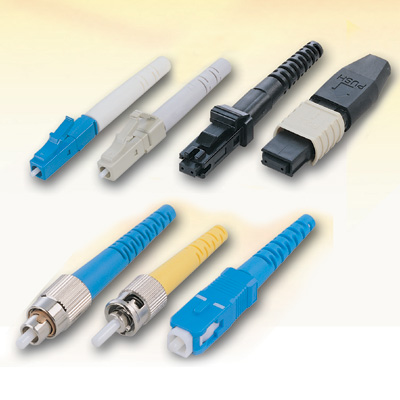Modern day communication relies a lot on the fibre optic cable connections. The system includes a series of cables made of fibre optic channels connected to optical transmitter. Amplifier system may also be used to magnify the weak signals in case multi-modal fibre optic cables. For domestic applications, the multiple fibre optic cables are routed through the underground conduits and tubes to ensure minimum interaction with environmental factors and human contacts.
Optical Transmitters: The Heart of Technology
The optical transmitters used in the fibre optic cable system are made of semiconductors. The Light-emitting Diodes or LEDs and Laser diodes are the most common optical transmitters used in the modern communication models. The optical transmitters that have LED source produce an incoherent light beam, while the ones installed with Laser Diodes produce a beam of coherent light source.
The optical transmitters used in the fibre optic cable system are made of semiconductors. The Light-emitting Diodes or LEDs and Laser diodes are the most common optical transmitters used in the modern communication models. The optical transmitters that have LED source produce an incoherent light beam, while the ones installed with Laser Diodes produce a beam of coherent light source.
What are the properties of a good Optical Transmitter?
For the sake of compatibility with the modern day Fibre optic cable system, the Optical transmitters must be:
- Compact in design to accommodate large bundles of fibre optic cables
- Efficient in terms of power consumption
- Minimum interference with the external signal sources
- No loss of signal due to heat dissipation
- Reliable accuracy owing to good quality insulation
The Laser diodes used in the Fibre optic cables are more affordable and reliable in terms of their operational benefits over a wide range of wavelengths and high frequencies. In case of optic channels using the LEDs, the efficiency is ambiguous and hard to predict. LED optical transmitters should be used to reduce cost and not for high-performance applications.
For the sake of compatibility with the modern day Fibre optic cable system, the Optical transmitters must be:
- Compact in design to accommodate large bundles of fibre optic cables
- Efficient in terms of power consumption
- Minimum interference with the external signal sources
- No loss of signal due to heat dissipation
- Reliable accuracy owing to good quality insulation
The Laser diodes used in the Fibre optic cables are more affordable and reliable in terms of their operational benefits over a wide range of wavelengths and high frequencies. In case of optic channels using the LEDs, the efficiency is ambiguous and hard to predict. LED optical transmitters should be used to reduce cost and not for high-performance applications.
The reduced dependence on the Amplifiers
In a traditional fibre optic cable layout, there could be multiple nodes where amplifiers can be linked. A sequential cable router can have as many as a 10 to 15 amplifiers. The information passed through the fibre optic cable layout is typically encrypted digitally that can be generated using the same set of hardware used in computer, telephone systems and telecom models.
Another advantage of using Laser-based transmitters is the minimized dependence on the optical receivers and amplifiers. The primary photo-dectors for telecommunications are made of conventional photo-diodes with Metal-semiconductor-Metal configuration.
What is the modern LED optical transmitter trend?
LED Optical transmitters are made of Gallium arsenide or Indium Gallium arsenide phosphate. Fibre optic cables used with the LED based optical transmitters can carry a longer wavelength of signals. Despite their high fibre dispersion rate, these transmitters can be used with quantum wells to emit signals over a broader spectrum.
In a traditional fibre optic cable layout, there could be multiple nodes where amplifiers can be linked. A sequential cable router can have as many as a 10 to 15 amplifiers. The information passed through the fibre optic cable layout is typically encrypted digitally that can be generated using the same set of hardware used in computer, telephone systems and telecom models.
Another advantage of using Laser-based transmitters is the minimized dependence on the optical receivers and amplifiers. The primary photo-dectors for telecommunications are made of conventional photo-diodes with Metal-semiconductor-Metal configuration.
What is the modern LED optical transmitter trend?
LED Optical transmitters are made of Gallium arsenide or Indium Gallium arsenide phosphate. Fibre optic cables used with the LED based optical transmitters can carry a longer wavelength of signals. Despite their high fibre dispersion rate, these transmitters can be used with quantum wells to emit signals over a broader spectrum.

All local area Wavelength- Division Multiplexing networks use fibre optic cables installed with LED-based optical transmitters.
The LEDs are quickly getting replaced by the Vertical Cavity Surface Emitting (VCSEL) Lasers. Speed is the key to transmit signals through the fibre optic cables. VCSEL devices are compatible with all single-mode as well as Multi-mode optic cables.
From stability to high-grade circuit integration, optical transmitters are major components of the optic fibre telecommunication channels.
The LEDs are quickly getting replaced by the Vertical Cavity Surface Emitting (VCSEL) Lasers. Speed is the key to transmit signals through the fibre optic cables. VCSEL devices are compatible with all single-mode as well as Multi-mode optic cables.
From stability to high-grade circuit integration, optical transmitters are major components of the optic fibre telecommunication channels.

















